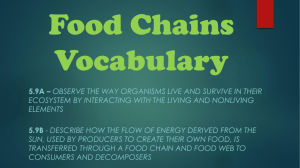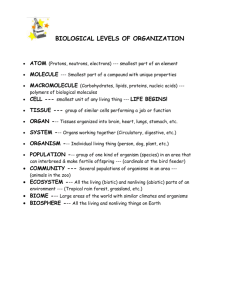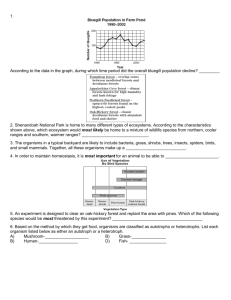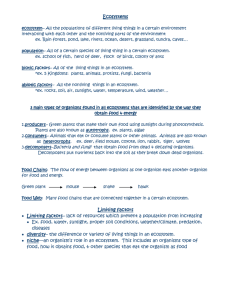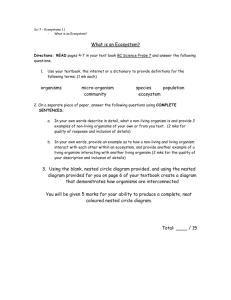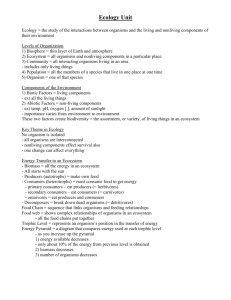Paris Mountain State Park Forest Ecology Vocabulary List Abiotic
advertisement
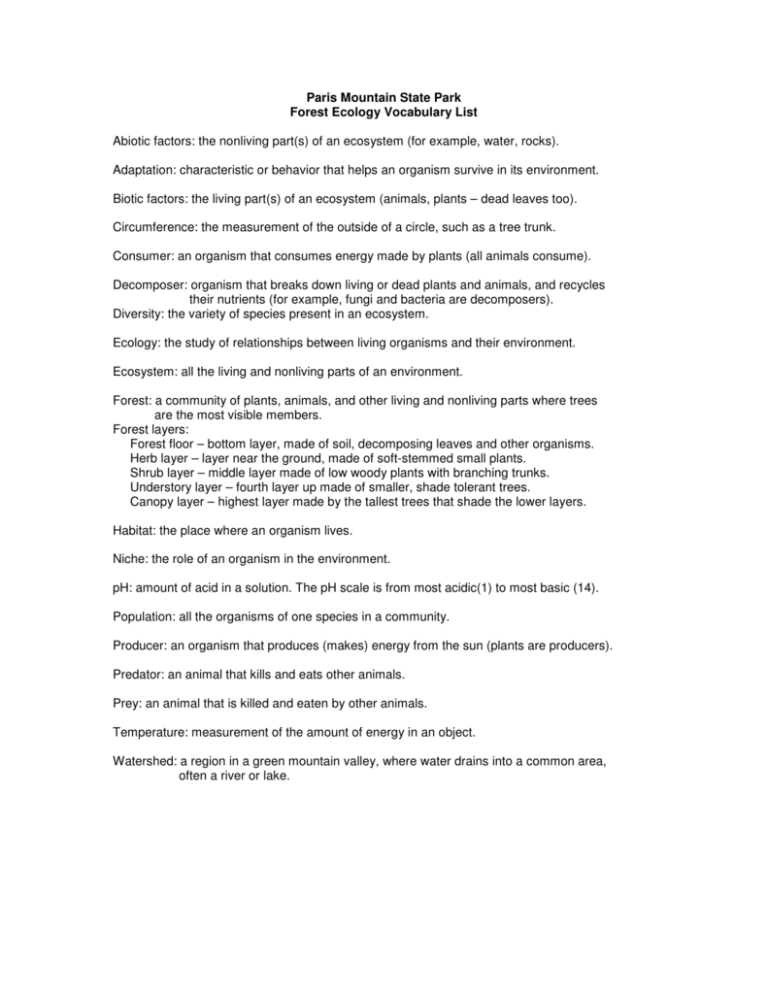
Paris Mountain State Park Forest Ecology Vocabulary List Abiotic factors: the nonliving part(s) of an ecosystem (for example, water, rocks). Adaptation: characteristic or behavior that helps an organism survive in its environment. Biotic factors: the living part(s) of an ecosystem (animals, plants – dead leaves too). Circumference: the measurement of the outside of a circle, such as a tree trunk. Consumer: an organism that consumes energy made by plants (all animals consume). Decomposer: organism that breaks down living or dead plants and animals, and recycles their nutrients (for example, fungi and bacteria are decomposers). Diversity: the variety of species present in an ecosystem. Ecology: the study of relationships between living organisms and their environment. Ecosystem: all the living and nonliving parts of an environment. Forest: a community of plants, animals, and other living and nonliving parts where trees are the most visible members. Forest layers: Forest floor – bottom layer, made of soil, decomposing leaves and other organisms. Herb layer – layer near the ground, made of soft-stemmed small plants. Shrub layer – middle layer made of low woody plants with branching trunks. Understory layer – fourth layer up made of smaller, shade tolerant trees. Canopy layer – highest layer made by the tallest trees that shade the lower layers. Habitat: the place where an organism lives. Niche: the role of an organism in the environment. pH: amount of acid in a solution. The pH scale is from most acidic(1) to most basic (14). Population: all the organisms of one species in a community. Producer: an organism that produces (makes) energy from the sun (plants are producers). Predator: an animal that kills and eats other animals. Prey: an animal that is killed and eaten by other animals. Temperature: measurement of the amount of energy in an object. Watershed: a region in a green mountain valley, where water drains into a common area, often a river or lake.

